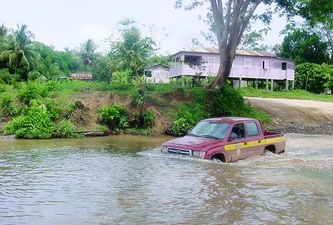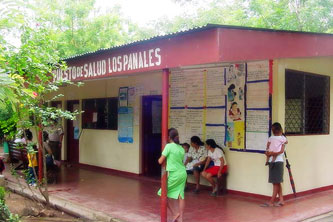Serodiagnosis KIT of Human Leptospirosis and Chagas Disease
Introduction
THE CNDR/MINSA ELISA LEPTO KIT is a laboratory technique for the prompt diagnosis of human leptospirosis using samples of serum, plasma and blood from suspected leptospirosis patients. The KIT gives rapid laboratory results (2½ hours), is cheap and provides high diagnostic resolutions (100% sensitivity and 99.6% specificity).
Generally speaking, laboratory techniques are extremely useful tools in the diagnosis of infectious illnesses. If these tools are produced at the national level, a country can make big economic savings and provide a greater number of poor people with ready access to diagnosis and treatment. The Nicaraguan Ministry of Health developed a laboratory technique for the serologic diagnosis of human leptospirosis, which also provides early warning of outbreaks of this deadly disease, avoiding deaths through prompt diagnosis and effective antibiotic therapy.
Human Leptospirosis is a zoonosis caused by the genus Leptospira Interrogan. The illness is produced when the bacteria penetrate the organism through various natural and artificial ways, producing symptoms that are characterized by general ill health accompanied by icterohemorrhagic fever. Leptospirosis is a fatal infectious disease and can cause serious epidemics, as happened in Achuapa - El Sauce in 1995, when more than 46 people died and another 3,000 patients needed hospital treatment. Fortunately the illnesses can be cured by antibiotics. For this reason, it is important to have good diagnostic instruments to anticipate epidemics, which occur mainly in the winter season when there are higher transmission rates. In winter, rain causes floods in which sources of water used for human consumption are polluted by rodents and domestic animals.
In 2004, more than 10,000 people were accurately tested in Nicaragua, with laboratory results that were rapidly available (2½ hours). Since this technique was introduced in Health Ministry services, in 2001, there have been no deaths from this deadly disease in Nicaragua.

THE CNDR/MINSA CHAGAS KIT is another laboratory technique that provides prompt diagnosis of Chagas disease in suspected patients and can be used to screed serum, plasma and blood samples. The KIT gives quick laboratory results (2½ hours), it is cheap and provides high diagnosis resolutions (100% sensitivity and 98.4% specificity). The Nicaraguan Ministry of Health developed this laboratory technique for the serologic diagnosis of Chagas Disease. At the time, it was the only country in Central America that did not have the economic and technical resources to conduct studies on this parasite. For this reason many aspects concerning prevention and control were unknown in the country.
Chagas Disease does not produce any specific symptoms, which generally remain unobserved until, after several years, it causes death mainly as a result of heart problems. This illness caused by a hemoparasite, trypanosoma cruzi, which is transmitted to people by the bite of the triatomine or assassin bug. These insects are common throughout Nicaragua and their natural habitats are closely associated with the bad living conditions of poor rural areas.
The Health Ministry, through the CNDR (national diagnostics and reference centre), and economic backing from TAIWAN, guarantees screening of Chagas Disease in 19 blood banks belonging to the SILAIS (local integrated health systems) of Madriz, Nueva Segovia, Estelí, Matagalpa, Jinotega, Boaco, León, Chinandega, Granada, Masaya, Carazo, Rivas, Río San Juan and the RAAS. This procedure ensures that 70,000 patients depending on transfusions in these health units do not receive blood that is infected by hemoparasites, which quickly leads to illness and even death.
In 2004, the Leptospirosis and Chagas Disease Diagnosis KITS won a human development innovations prize, promoted by the CONYCITNicaragua, in collaboration with UNDP.









 COUNTRY OF ORIGIN
COUNTRY OF ORIGIN